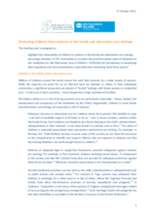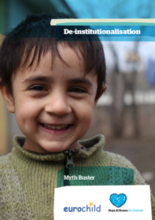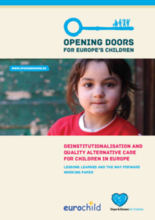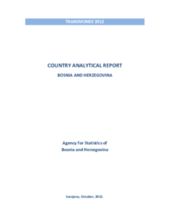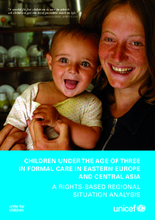Displaying 1271 - 1280 of 1508
The purpose of the toolkit is to assist all public authorities in Europe involved in the programming and implementation of EU Structural Funds (and other relevant funds) to make decisions which will help to improve the lives of more than a million European citizens currently living in institutional care. The toolkit aims to explain how EU funds can support national, regional and local authorities in designing and implementing structural reforms to develop quality family-based and community-based alternatives. The toolkit explicitly deals with the European Social Fund (ESF) and the European Regional Development Fund (ERDF), but it aims to apply also to the programming and implementation of the European Agricultural and Rural Development Fund (EARDF) and the Instrument for Pre-accession Assistance (IPA).
This briefing note, produced by an Interagency Working Group on children without parental care, is designed to highlight the vulnerability of children to violence in the family and alternative care settings, and to encourage members of the CAT Committee to consider the potential added value of reference to the Guidelines for the Alternative Care of Children.
In this TED Talk, poet and playwright Lemn Sissay tells his story of growing up in foster care in the UK.
This briefing paper seeks to address key misunderstandings about de-institutionalisation. It explains what it is and what it is not and addresses key questions often asked about the need for such institutions, the role they play and the impact of this transformation and what it entails.
This paper aims to raise awareness on the perverse effects of institutionalisation on children and it calls for comprehensive system reforms, starting with a transition towards family and community-based care. It highlights country level lessons learnt in the European context that demonstrate how deinstitutionalisation can be achieved in practice.
Through a comprehensive statistical analysis and literature review, this UNICEF report provides a child rights-based up-to-date review of the situation of children under the age of three in formal care in the countries of Central and Eastern Europe and the Commonwealth of Independent States (CEECIS).
This document from the National Statistical Service of the Republic of Armenia provides an overview and assessment of the alternative care system in the country.
This paper focuses on appropriate responses to the unique challenges faced by young people at risk who are transitioning out of state care in South Africa.
Virginia Commonwealth University Professors, Karen Smith Rotabi and Rosemary Farmer, examine impact of neglect on brain development in their recent podcast, Orphaned and Vulnerable Children and Brain Development. Through the persepective of the intersection of neuroscience and social welfare practice, Farmer and Rotabi examine how poverty of experience and such potential adverse situations as institutionalization disrupt brain development in babies and young children.


